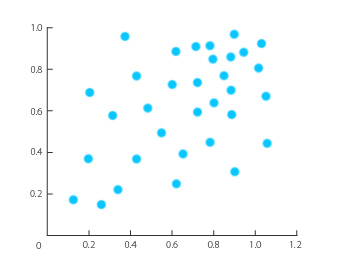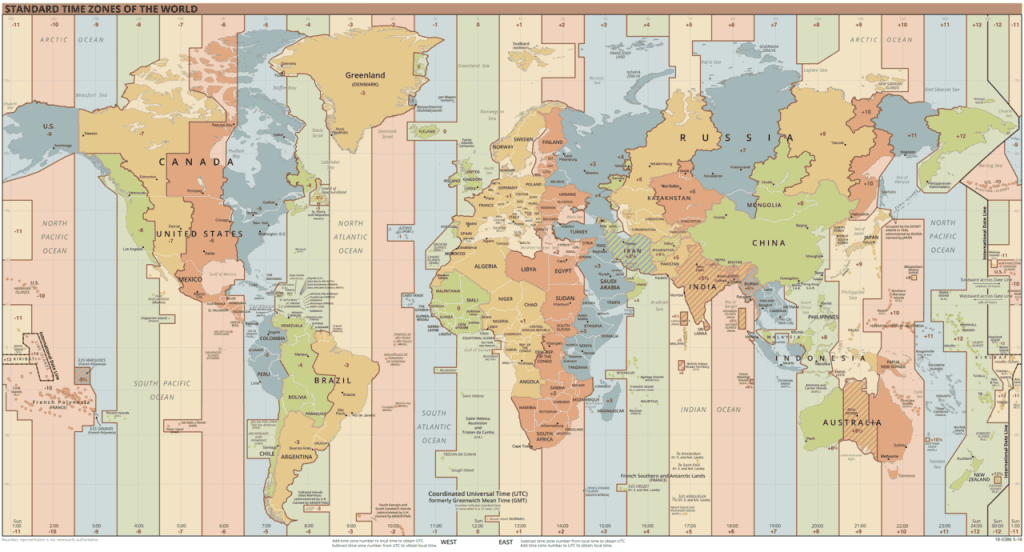Recently finished Unit 2 of QCAA General Maths and are making a start on Unit 3?
To help you get a head start, we’ve broken down all the topics that you’ll be studying in this unit and tips to help you keep up with the content.
Let’s dive in!
What is Unit 3 in QCAA General Maths all about?
Topic 1: Variable Association
Topic 2: Modelling Associations Between Variables
Topic 3: Time Series Analysis
Topic 4: Arithmetic and Geometric Sequences
Topic 5: Earth Geometries and Time Zones
Revision for QCAA General Maths Unit 3
What is Unit 3 in QCAA General Maths all about?
Unit 3 in QCAA General Maths is all about learning arithmetic and analytical skills that are very useful in your everyday life, unlike say complicated aerospace equations and theories about mathematics.
This guide will break down and summarise what you’ll be learning about across Unit 3, and what you’ll be using this knowledge for in your daily life (that’s the end goal, isn’t it?).
Topic 1: Variable Association
The first topic is all about determining and interpreting the relationship between two variables, to factors that affect an outcome. In business, as well as your own personal finance, these sorts of problems come up all the time!
You’ll be learning how to interpret and construct scatter plots, determining whether two variables are linearly correlated, as well as determining the strength of such correlation.
Image sourced from Wikimedia Commons
You’ll be able to understand that, as with most things in real life, correlation doesn’t necessarily mean causation — an especially valuable skill in today’s workplace, where decisions are driven almost entirely by data.
It will also give you a considerable foundation from which to begin when you get to uni, and study anything to do with data. The coefficients of determination and correlation are also part of this first topic — two concepts that are very simple yet key to be effective in any decision making situation involving data.
Key concepts include:
- Interpreting scatterplots
- Measuring the strength and correlation of a relationship
- Displaying bivariate data from two numerical
variables- classifying the variables
Topic 2: Modelling Associations Between Variables
The second topic is all about preparing you to make your IA1. It will cover the basis of analysing graphs, not just mathematically, but in a written manner. Around this time also, you’ll be introduced to skills such as Excel and graph plotting on technology, which you’ll need for IA1.
The main concepts of Topic 2 are mainly everything to do with fitting a linear model to mathematical data, and understanding the prominent features of graphs. These vary from structural change, seasonality and cycles.
In this topic, you’ll also delve deeper in the concept of causation and association, solidifying the knowledge you’ll have accumulated in the first topic.
You will crucially also learn about Linear Regression and its uses, as well residuals. These concepts are incredibly important to understand, as they are not only useful in most of your other subjects dealing with data (Chemistry, Physics and Biology) but also amazingly useful in your uni subjects, and ultimately work.
Key concepts here are:
- Fitting a linear model to numerical data
- Using the least squares regression line to model
- relationship between two numerical variables
- Association and causation
Topic 3: Time Series Analysis
This topic is an upgrade from the first two. By this time you will have delved into your IA1, and will be starting to look into time series.
The whole idea is to look at data across time, rather than in categories. You will be introduced to concepts such forecasting specific results from a dataset, as well as smoothing.
Predicting results from a dataset is the principal reason why we have datasets. With them, we can estimate the future outcome of a variable, from climate change to the price of fuel.
For your IA1, you will also most likely be asked to look at results that happen across time. Therefore you shouldn’t underestimate how useful this topic will be!
You will also be introduced to smoothing. Realistically, you will find out that most data we collect does not line up to a perfect trend, especially when this is done across a long time.
So, you must produce an alternate dataset with the means of most points, so that the data appears more in line with the relationship you described your data to be. Even if it sounds like cheating, it all helps to predict future data points.
Here are the key concepts from here:
- Describing time series plots
- Smoothing a time series using moving means
- Seasonal indices
- Fitting a trend line and forecasting
- Conducting a statistical investigation involving time series
Topic 4: Arithmetic and Geometric Sequences
This topic is a huge change from the last three. By now you will have finished your IA1, and you’ll be going straight to IA2. Sequences are the first pieces of knowledge you will have to study for an exam.
Sequences are lists of numbers that follow a specific rule. Uses of these can be found all the way from science to business. They will also set you up for finance skills you will later learn in Unit 4.
You will first learn about recursion rules — the formulas that determine what numbers appear in the sequences. You’ll have to learn two sets of recursions, as geometric sequences use powers rather than conventional signs in their recursions.
You will then be asked to find a term in a sequence, as well as define its place in it. It sounds difficult, but once you know the formulas, it’s all about rearranging.
Next, it’s all about placing those sequences in real world scenarios. This will show you exactly how useful they are in real life!
Generally, you’ll get to do the same for Geometric sequences.
Below are the key concepts you’ll cover:
- Sequences and simple recursion
- Defining an arithmetic sequence by recursion
- A general rule for finding the nth term of an arithmetic
Sequence- Application of arithmetic sequences
- Geometric sequences
- A general rule for finding the nth term of a geometric sequence
- Applications of geometric sequences
Topic 5: Earth Geometries and Time Zones
This will be your final learning topic for Unit 3, and probably the most fun of the 5. It revolves around learning the time mechanisms and the positioning systems developed to work out position, date and time on Earth of one location in relation to another.
In a greater sense, this topic is one of the ones which is very useful throughout life, and one that you should enjoy learning as much as possible, and keep with you past the final exam. It will also give you a greater sense of how the Earth works and the various mechanisms that determine time differences across the globe.
First, you’ll be introduced to the concepts of latitude and longitude, which have been useful to navigators and explorers for centuries, and which is still in use today. You will then become familiar with the concepts of parallels and meridians, and exactly how the earth is divided up in a cartographical sense.
You will then be asked to measure the angles and arc lengths (the distance across the surface of a sphere between two points) of the Earth surface. This can be particularly useful when trying to determine the distance between one point to another on the globe.
Lastly, you will be introduced to time zones and time differences.
You’ll find out about the various time zones that divide the earth, and you’ll be asked to determine time differences for real world scenarios. If you plan to travel, this is definitely something you shouldn’t fall asleep for!
Key ideas for this section are:
- Angle measurement and arc length
- Latitude and longitude
- Time zones and time differences
Revision for QCAA General Maths Unit 3
You’ll find that the most challenging topics to revise will be the sequences, as these are the most ‘mathematical’ of the five. Thus, get in as much practice as possible for Topic 4, as this will be the hardest to stick in your head.
Although the first 3 are mainly utilised for the completion of your IA1, they will still be tested in the final exam, so don’t forget to revise them and practise them.
Time zones are easy to remember, but also easily confused. Make sure you run through the methods carefully one at a time, while also practising different question types.
Revision chapters in your textbook are extremely useful. Make as much use of these as possible, as you can never be completely prepared for an exam situation.
Complete as many question types as possible, and don’t shy away from engaging in the most difficult questions. These will challenge and make you as ready as you can be for the exam!
Looking for more resources to help with Term 1 of Year 12? Check out our full list here!
On the hunt for other QCAA General Maths resources?
Check out our other articles and resources below:
- The Ultimate Guide to QCAA General Maths Unit 4: Investing and Networking
- Download QCAA General Maths Practice Exam for External Assessment Revision
- How to Ace Your External Assessment for General Maths
- QCAA Multiple Choice Practice Questions for Unit 3 & 4 General Maths External Assessment
- 5 Tips on What to Do if Your Real IA1 Assessment is at the End of Year 11
Also studying Unit 3 of Physics? Check out our guide on Unit 3: Gravity and Electromagnetism
Are you looking for some extra help with revising for QCAA General Maths Unit 3?
We have an incredible team of QLD tutors and mentors!
It’s true that Year 12 can be a big step up! See how you’re tracking with this quiz!
We can help you master the QCAA General Maths syllabus and ace your upcoming General Maths assessments with personalised lessons conducted one-on-one in your home or online!
Our Brisbane based tutoring has enabled many students to ace General Maths and pursue their preffered uni option!
We’ve supported over 8,000 students over the last 11 years, and on average our students score mark improvements of over 20%!
To find out more and get started with an inspirational QLD tutor and mentor, get in touch today or give us a ring on 1300 267 888!
Vittorio Manessi is an Art of Smart tutor based in Queensland studying environmental science. He was one of the first Year 12 students to study under the new ATAR system in Queensland. He enjoys Maths, Science, English and Ancient History and is keen to share his knowledge of the QCE by making awesome resources.






